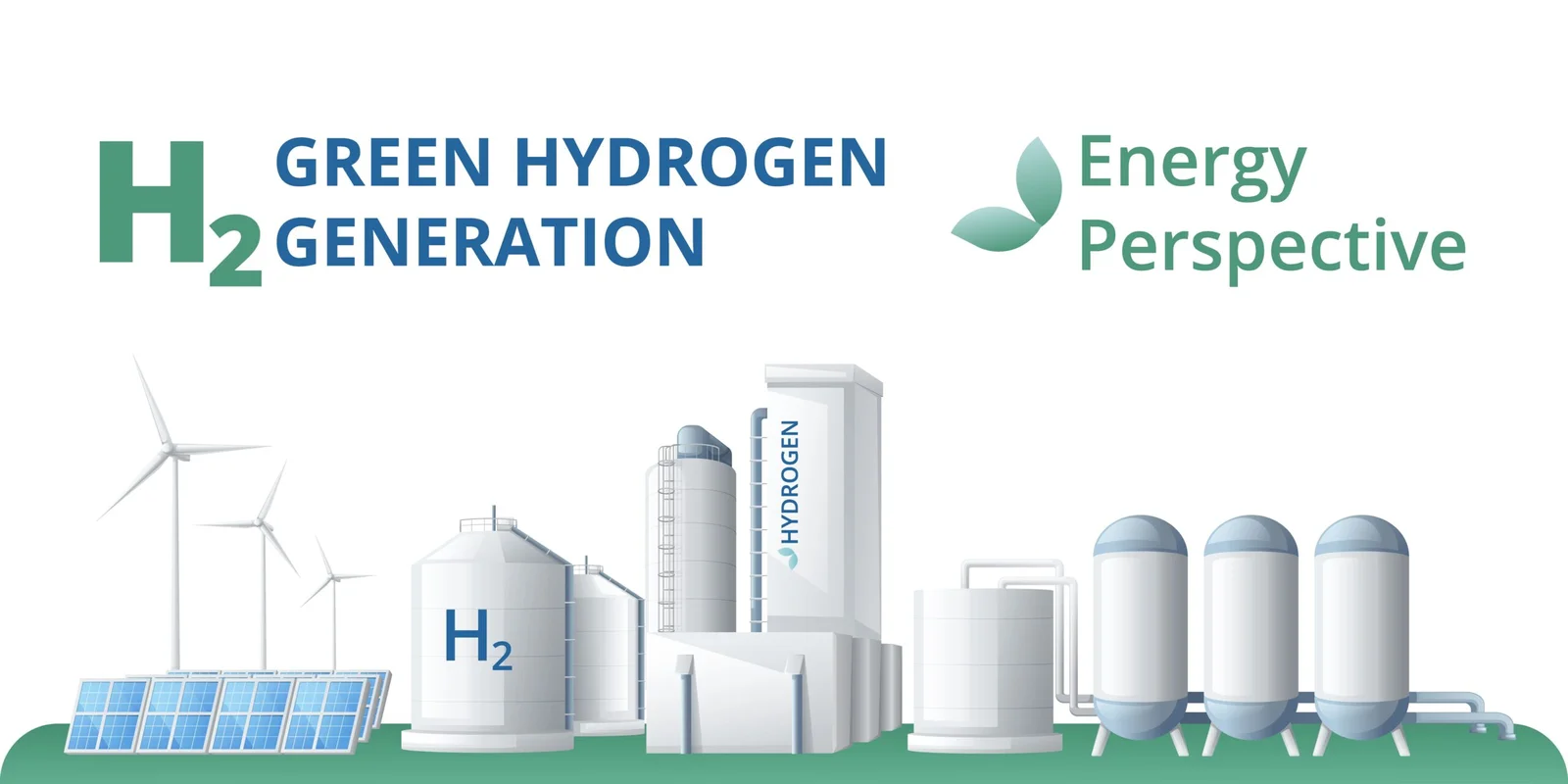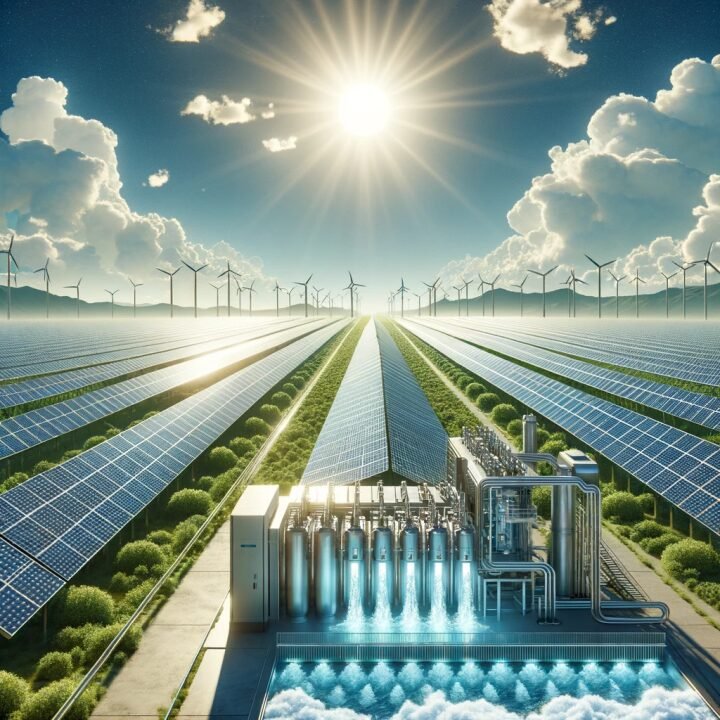In the quest for a sustainable and clean energy future, the integration of sunlight to hydrogen represents a promising synergy. This combination not only addresses the intermittent nature of solar energy but also paves the way for a versatile and low-carbon energy system. This article explores the transformative potential of coupling sunlight to hydrogen, shedding light on how this synergy is shaping the future of clean energy.
The Basics of Solar Energy and Hydrogen Production
Solar Energy harnesses sunlight to hydrogen through photovoltaic (PV) cells or solar thermal systems to generate electricity or heat. It is a renewable resource with the potential to reduce greenhouse gas emissions and dependency on fossil fuels. Despite its benefits, solar energy faces challenges such as intermittency and variability, which can affect its reliability as a sole energy source.
Hydrogen Production Overview: Hydrogen is the most abundant element in the universe and can be used as a clean energy carrier. When burned or used in fuel cells, it produces only water as a byproduct, making it a zero-emission fuel. Hydrogen is produced through various methods, including steam methane reforming (SMR), electrolysis, and gasification. Electrolysis, which splits water into hydrogen and oxygen using electricity, is especially promising when paired with renewable energy sources, like sunlight to hydrogen.
The Role of Solar Power
Solar power, a proven and expanding source of renewable energy, plays a pivotal role in the production of green hydrogen. The falling costs of solar photovoltaic (PV) systems, coupled with technological advancements, have made solar energy more accessible and efficient than ever before. By harnessing the power of the sun to generate electricity for hydrogen production, we can achieve a truly green and sustainable energy cycle by converting sunlight to hydrogen.
The Synergistic Potential of Sunlight and Hydrogen
The combination of green hydrogen and solar power through sunlight to hydrogen is a match made in heaven for several reasons:
- Decarbonization Across Sectors: Green hydrogen can be used in sectors that are challenging to electrify directly, such as heavy industry (steel and cement production) and long-haul transportation (shipping and aviation). This synergy expands the reach of solar power beyond the electric grid, contributing to widespread decarbonization through sunlight to hydrogen.
- Energy Storage Solution: Green hydrogen serves as an effective way to store and transport energy. Solar power is intermittent; it’s not always produced when demand is highest. Converting excess solar energy into sunlight to hydrogen provides a way to store this energy for use when needed, enhancing energy security and grid stability.
- Leveraging Unused Resources: Vast areas of the world with high solar irradiance, often underutilized lands, can become powerhouses for green hydrogen production. This not only maximizes the use of renewable resources but also stimulates economic development in these regions, optimizing the transition from sunlight to hydrogen.
The Path Forward: Challenges and Opportunities
Despite its promising potential, the path to a solar-powered green hydrogen economy faces several challenges:
- Cost and Efficiency: The production cost of green hydrogen, primarily due to electrolyzer technology and renewable energy costs, remains higher than conventional hydrogen production methods. However, with ongoing research, economies of scale, and policy support, these costs are expected to fall significantly, making sunlight to hydrogen more competitive.
- Infrastructure Development: Establishing the infrastructure for hydrogen production, storage, distribution, and utilization requires substantial investment and coordination across sectors and borders. The shift from sunlight to hydrogen will necessitate dedicated networks and systems.
- Regulatory Framework: Supportive policies, incentives, and international cooperation are essential to accelerate the adoption of green hydrogen and ensure environmental and economic sustainability through sunlight to hydrogen systems.
The Future of Solar and Hydrogen Synergy
1. Technological Innovations
- Advancements in Electrolysis: Research is focused on improving electrolysis technology, including the development of more efficient and durable electrolyzers, optimizing the efficiency of sunlight to hydrogen production.
- Hybrid Systems: Innovative hybrid systems that combine solar power with other renewable energy sources, such as wind, are being explored to enhance overall energy production and storage through sunlight to hydrogen systems.
2. Policy and Market Trends
- Supportive Policies: Governments and organizations are increasingly supporting clean energy technologies through incentives, subsidies, and research funding, which can accelerate the adoption of solar-powered hydrogen through sunlight to hydrogen processes.
- Market Growth: The market for hydrogen fuel cells and solar technologies is expected to grow significantly, driven by advancements in technology and rising demand for clean energy solutions. The sunlight to hydrogen approach will be at the forefront of this transition.
3. Global Impact
- Sustainable Development Goals: The integration of solar energy and hydrogen production supports several Sustainable Development Goals (SDGs), including affordable and clean energy, climate action, and sustainable cities and communities. The transition from sunlight to hydrogen plays a critical role in achieving these global goals.
- Global Collaboration: International cooperation and partnerships will play a vital role in advancing sunlight to hydrogen technologies, sharing best practices, and scaling up solutions to address the world’s energy challenges.
Conclusion: A Sustainable Future Is Within Reach
The integration of green hydrogen production with solar energy through sunlight to hydrogen presents a compelling vision for a sustainable future. It embodies the principles of circular economy and zero-emission energy systems, offering a versatile and clean solution to our energy needs. As we stand at the crossroads of climate crisis and technological innovation, the development and deployment of green hydrogen powered by sunlight to hydrogen emerges as the most viable path to a sustainable, decarbonized future for humanity.

Embracing this vision requires collective effort—governments, industries, and communities must come together to invest in research, develop infrastructure, and implement policies that pave the way for this green revolution. The journey is undoubtedly challenging, but the rewards—a healthier planet, sustainable energy, and a resilient economy—are immeasurable. The future is green, and it’s powered by hydrogen and the sun.
Follow us on LinkedIn for industry updates, project news, and career opportunities: Soleos Solar Energy Pvt. Ltd., Soleos Spain and Soleos Energie GmbH
Contact us today at +91-8320095024 or visit www.soleosenergy.com to learn more about future of solar energy in India. Feel free to reach out with any questions or to start your solar journey!

Be part of this solar transformation. Pledge your commitment today to Solarize Bharat through Soleos Solar Energy Pvt. Ltd.. Let’s power our nation sustainably and equitably through homegrown, future-oriented solutions. The future is bright and solar!
Stay solar-powered and environmentally inspired!
P.S.: Share this blog with fellow solar enthusiasts to spread the word about the exciting world of solar energy!
